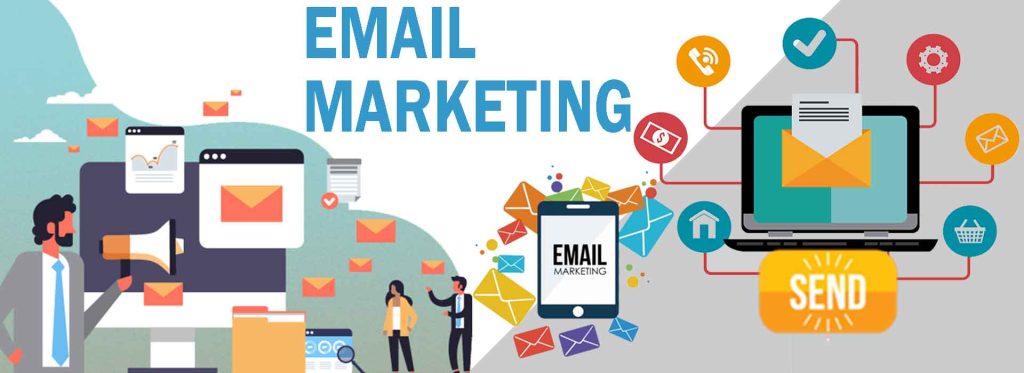Email Marketing
Email marketing is a digital marketing strategy that involves sending targeted and personalized email messages to a group of recipients with the aim of building relationships, promoting products or services, and achieving specific marketing goals. Email marketing is a cost-effective and efficient way to reach and engage with your audience, as long as it’s done correctly.
Building an Email List:
- Building a high-quality email list is one of the most important steps in email marketing. This list consists of individuals who have given their consent to receive emails from your business. You can gather email addresses through sign-up forms on your website, social media, events, and other channels.
Segmentation:
- Divide your email list into segments based on criteria like demographics, purchase history, behavior, or engagement. This allows you to send more relevant and targeted content to different groups.
Content Creation:
- Create valuable and engaging email content, which can include newsletters, promotional offers, product updates, educational content, and more. The content should be tailored to your audience’s interests and needs.
Personalization:
- Personalize your emails by addressing recipients by their names and tailoring the content to their preferences and past interactions with your business.
Mobile Responsiveness:
- Ensure that your emails are mobile-friendly, as a significant portion of email opens occurs on mobile devices.
Design and Layout:
- Create visually appealing and well-structured emails that are easy to read and navigate. Use images, branding elements, and a clear call to action (CTA).
Frequency and Timing:
- Consider the timing and frequency of your emails. Sending too many emails too often can lead to unsubscribes, while infrequent emails may cause recipients to lose interest.
A/B Testing:
- Experiment with different elements of your emails (subject lines, content, CTAs) through A/B testing to optimize performance.
Compliance with Regulations:
- Comply with email marketing regulations, such as the CAN-SPAM Act in the United States and the General Data Protection Regulation (GDPR) in Europe. Ensure that you provide recipients with the option to unsubscribe from your emails.
Metrics and Analytics:
- Track email performance using key metrics such as open rates, click-through rates, conversion rates, and unsubscribe rates. Use analytics to understand what’s working and what needs improvement.
- Automation:
- Implement email marketing automation to send pre-scheduled emails based on user actions or triggers. This can include welcome emails, abandoned cart reminders, and drip campaigns.
- Lead Nurturing:
- Use email marketing to nurture leads through the sales funnel, providing them with information and content relevant to their stage in the buying process.
- Retention and Customer Loyalty:
- Email marketing is not just about acquiring new customers; it’s also about retaining and nurturing existing customers to build long-term loyalty.
- Integration with Other Marketing Channels:
- Integrate your email marketing efforts with other marketing channels, such as social media and content marketing, to create a cohesive and effective marketing strategy.
Email marketing, when executed effectively, can be a powerful tool for engaging with your audience, nurturing leads, and driving conversions.

